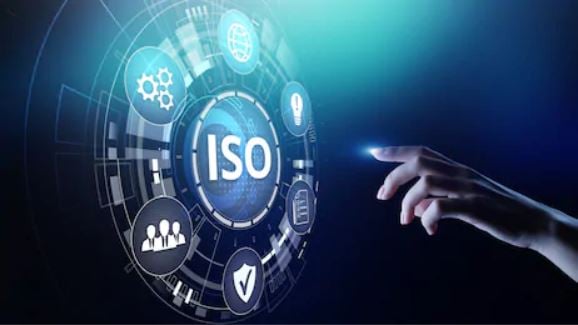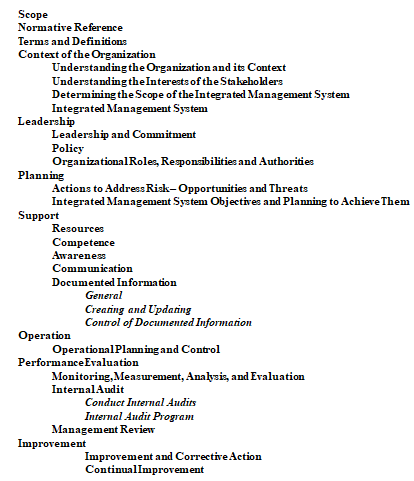This is a guest blog, written by Alec Alessandra, M.B.A, former John Deer Executive, former IMEC Board Member, and Senior Strategist of Strategic Impact Partners, and Robert Pojasek, Ph.D, Senior Strategist of Strategic Impact Partners.

Many small and medium-sized supplier organizations are receiving notices from their larger sourcing customers to implement a variety of different international standards at their facilities. These standards could include:
- ISO 9001: 2015 (for quality)
- ISO 14001: 2015 (for the environment)
- ISO 31000: 2018 (regarding risk management)
- ISO 45001: 2018 (covering health and safety)
- ISO 50001:2018 (covering energy management)
- The Ethical Trading Initiative Program
These requests are usually being driven by an increasing demand for improved accountability and risk management from their shareholders and larger investment firms. Their concern is understandable if you think for a moment about all the potential liabilities of conducting a global business today, including the complexity of supply chain operations and the unpredictability of volatile economic, political and social conditions around the world. C-suite leaders are being subjected to hyper-scrutiny while Boards are under pressure to do what’s necessary to prevent any sudden financial loss associated with issues stemming from a company’s operations.
You may have used some of the international management system standards in the past. You may also have heard that it is very expensive to implement and maintain these standards. There are even claims that the standards require you to manage a tremendous amount of unnecessary paperwork that does not contribute to real improvement in your manufacturing operation.
A fair amount of the rumor or market chatter about working with these standards may indeed have been accurate prior to 2012, but are no longer. Since then, the International Organization for Standardization (ISO) has created a new approach known as the “high-level structure” (see Figure 1). This structure is an open-source document available on the Internet that ISO standards committees use to organize their work. The most significant development out of this new approach is that, for the first time, all the new and revised ISO standards are written to the same format.
How can your organization now benefit from this transformational approach to standards alignment and conformance, if your team so chooses to adopt one or more of them?
- Through real integration: Now all standards, including non-ISO standards, can be placed into an integrated format.
- By being embedded in your organization’s operations: These standards anchor the work into your organization instead of being an add-on item.
- By closing the gap between the standards and the commonly used process improvement methods preferred for continuous quality: You can link Lean, Six Sigma and other popular programs to these standards to ensure they become a seamless part of the overall high-level operating framework.
- You can self-certify your conformance without the cumbersome and resource-demanding experience of working with an external ‘certification body.
Since most companies have little experience with successfully converting to the new standards using the high-level structure, a word of caution is in order. The transition can become expensive. To avoid getting caught going down an unnecessary path, there are ways to approach adoption of the standards and notifying your customers of the conversion.
1. Purchase the required management system standards and seek to implement them in all your facilities. Recognize that the “Context” must be prepared separately for each of the locations and there may be some other elements that need attention at the facility level. Most local ISO consultants are not capable of supporting what is now required in the new global standards conformance environment.
2. Use a “cluster” approach where a few facilities jointly share the cost of a facilitator to guide these efforts. That resource can leverage remote-based video coordination to enable the kind of intervention that you would receive in an online university course using similar equipment.
3. Find a contractor that has a SaaS (Software-as-a-Service) platform and interface capability that will prompt you to enter your information into their application to prepare you for self-certification of the program. All the contact with the SaaS facilitator will be managed through online video conferencing platforms.
4. Learn how to create “self-declaration” and self-assessment programs that can be combined with a conformity statement (ISO 17050-2) that meets the requirements for sending to any sourcing customer.
Detractors of the “self-determination and self-declarations” approach argue that if a sourcing customer requires that the supplier company use an international management system standard (e.g. ISO 9001:2015), the organization must be properly designated as a “Certification Body.” However, this stance is inconsistent with current information on the ISO website.
The organization has the flexibility to retain an external support resource with documented experience helping companies implement and/or build audit management systems using the high-level structure and risk management framework.
ISO 17050-1[vi] can be used to create a conformity statement that will satisfy the sourcing company customer as having addressed their interests in the “self-declaration and self-determination” of the management system(s). The customer engages with the supplier organization over time to make sure that the management system(s) continuously meets their interests. One way to monitor the management system is to use ISO 9004:2018[vii] with its maturity grid for tracking each element and monitoring progress though a self-evaluation method. The maturity matrix information from the self-evaluations will need to be properly described and maintained.
Some outsourced facilitators with the right combination of standards experience, current working knowledge in applying the high-level structure, and a history in operations leadership roles within any number of manufacturing contexts will be able to effectively transition an organization. They may lead them from the once sufficient, but now limited usefulness, of ISO 9001 and graduate a team to the greater capability offered in ISO 14001:2015 and ISO 45001:2018.
No matter what path you choose for moving forward, in using the ISO High-Level Structure to meet your large sourcing customer requests you can be certain that it will not only help maintain a strong accountability-based relationship – but bank equity of good will for responding to the inevitable scrutiny of your facilities by local regulators and other oversight stakeholders.
Figure 1: The ISO High-Level Structure

Reference:
(1) International Organization for Standardization (ISO) (2012). “Management Makeover: New Format for Future ISO Management Systems Standards.” Retrieved from: https://www.iso.org/news/2012/07/Ref1621.html
Interested in learning more about ISO standards and obtaining ISO certifications? Contact IMEC at 888-806-4632 or send an email to info@imec.org.




